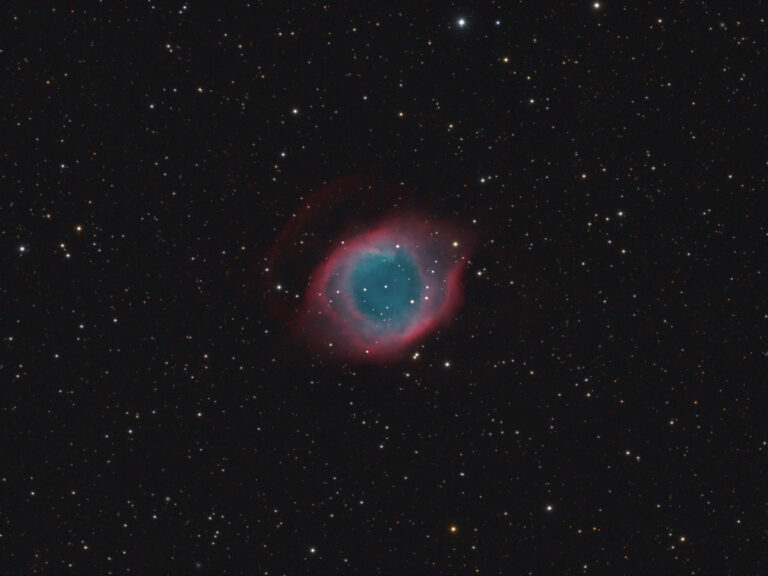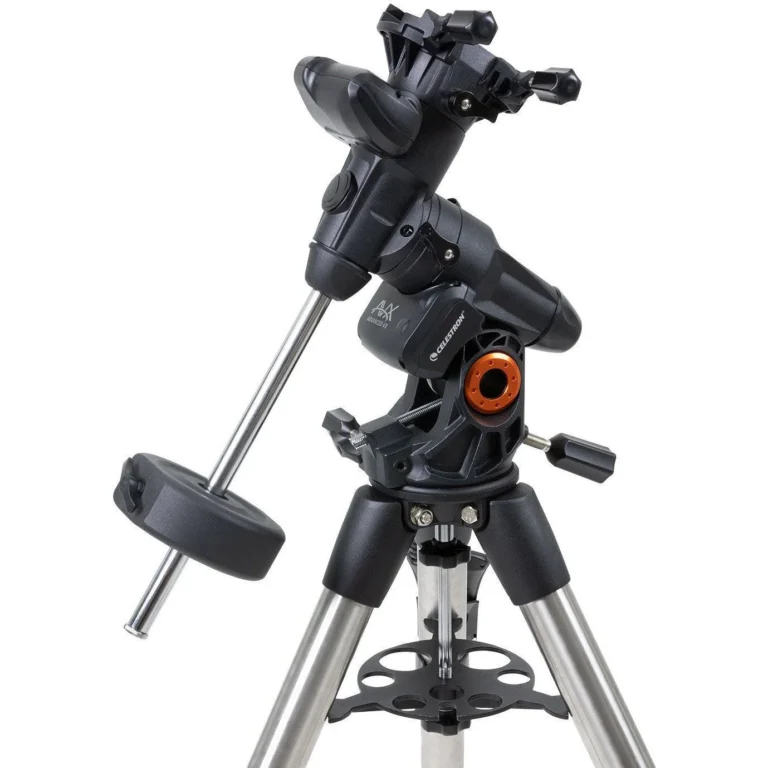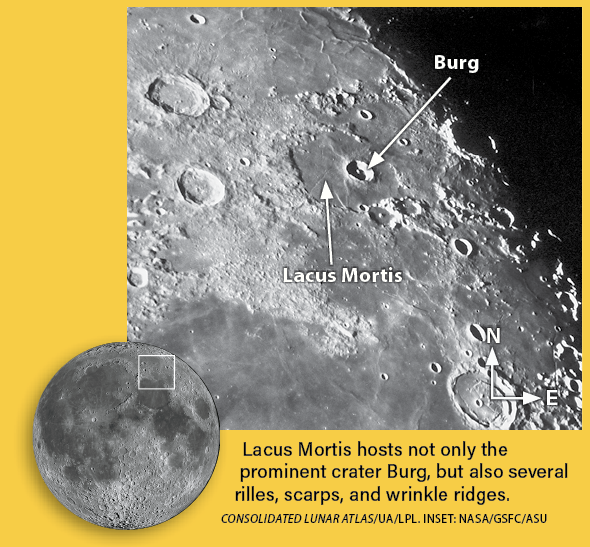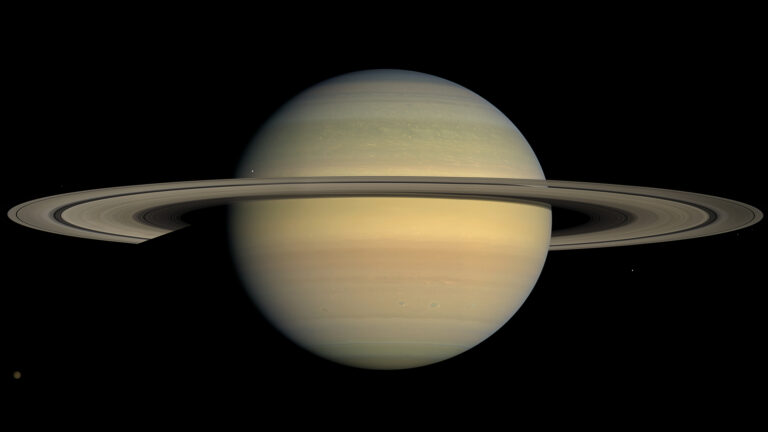
Key Takeaways:
- On November 27, Saturn will reach a stationary point in the constellation Aquarius, visible at magnitude 0.9 and positioned 40° high in the southern sky at 8 P.M. EST, with a waxing Moon in close proximity.
- Telescopic observation of Saturn will reveal an 18" disk and a 41" ring system tilted 0.4° to our line of sight, appearing virtually edge-on, with moons Rhea, Tethys, Dione, and Titan also visible, though the nearby Moon may hinder the viewing of fainter satellites.
- By November 29, Mercury will attain its stationary point at 10 A.M. EST, concluding its retrograde motion; it will be observable at magnitude 0.4 in the eastern sky approximately 40 minutes before sunrise, appearing 8° high in Libra.
- During the pre-sunrise viewing window for Mercury, bright Venus (magnitude -3.9) will also be visible just above the eastern horizon, with telescopic views showing Mercury’s 8"-wide disk as 30 percent lit and Venus’s 10"-diameter disk nearly 99 percent illuminated.
Looking for a sky event this week? Check out our full Sky This Week column.
November 27: Ceres comes to a stop
Saturn comes to a stationary point in our sky tonight at 8 P.M. EST in the constellation Aquarius. At 8 P.M. local time, the ringed planet is some 40° high in the south, shining at magnitude 0.9. You can’t miss it, as it’s the brightest point of light in this region of the sky, hanging below the Circlet asterism of Pisces the Fish and far to the upper left of magnitude 1.2 Fomalhaut, the brightest star in this part of the sky. The waxing Moon is just to Saturn’s lower right, also in Aquarius this evening.
Through a telescope, Saturn’s disk spans 18”, while its rings stretch 41” along their long axis. The ring system is tilted just 0.4° to our line of sight, so the rings appear virtually edge-on. If you’re observing at 8 P.M. EST, 10th-magnitude Rhea, Tethys, and Dione are visible near the planet. Rhea is alone to the east, while Dione is slightly closer than Tethys to the west. Titan, the brightest moon, is mid-8th magnitude and now sits far west of the planet after transiting earlier this week; it is located some 2’ from the planet’s center.
The light of the nearby Moon will likely make it difficult to spot any of Saturn’s other, smaller moons, as they are fainter than 10th magnitude.
Sunrise: 7:00 A.M.
Sunset: 4:36 P.M.
Moonrise: 12:49 P.M.
Moonset: —
Moon Phase: Waxing gibbous (59%)
*Times for sunrise, sunset, moonrise, and moonset are given in local time from 40° N 90° W. The Moon’s illumination is given at 10 P.M. local time from the same location.
Tomorrow morning, November 29, Mercury comes to its stationary point at 10 A.M. EST, ending its retrograde path and turning to slide eastward (prograde) against the background stars once more. The solar system’s smallest planet, visible in the eastern sky before sunrise, shines at magnitude 0.4.
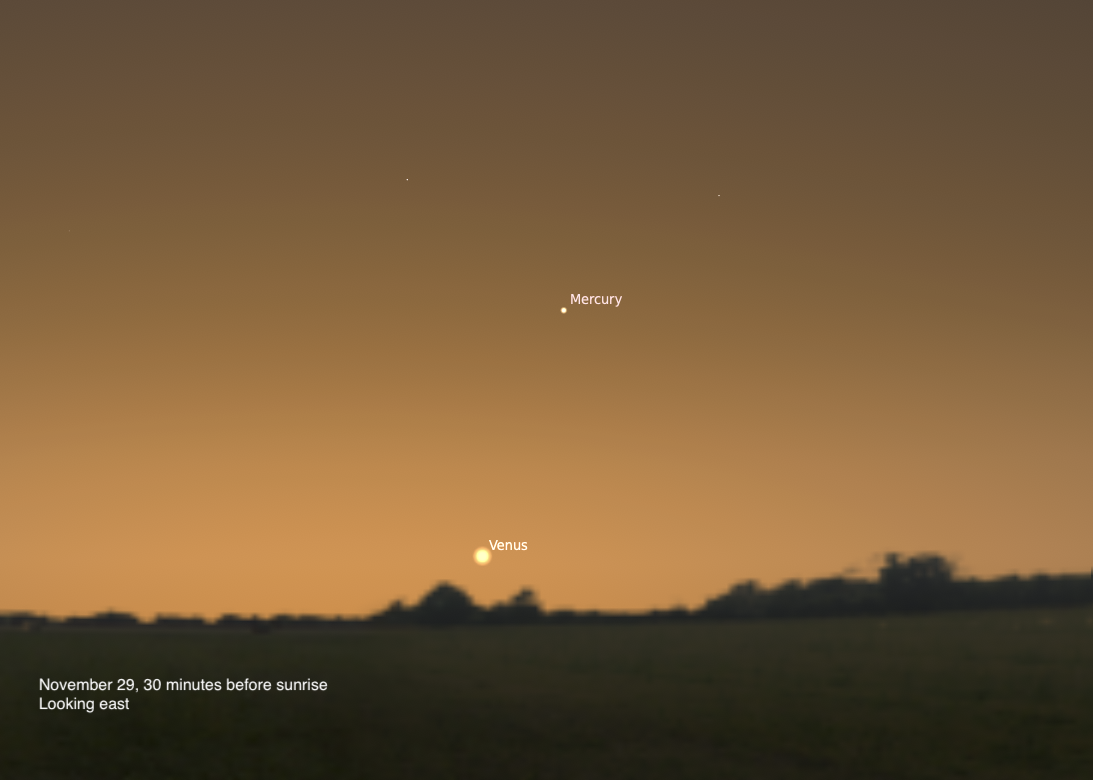
Try for it some 40 minutes before sunrise, when Mercury is 8° high and climbing above the eastern horizon in the constellation Libra. Bright Venus — magnitude –3.9 — has just cleared the horizon at this time. Give it another 10 minutes, and it reaches 2° in altitude. You’ll need a clear horizon to spot it, but it’s bright, which certainly helps.
If you’ve got a telescope, take a few minutes to observe each of the two planets through the eyepiece before you need to pack away your equipment prior to sunrise. Mercury’s 8”-wide disk is some 30 percent lit; compare this with Venus 10”-diameter disk, which is nearly fully illuminated at 99 percent.

